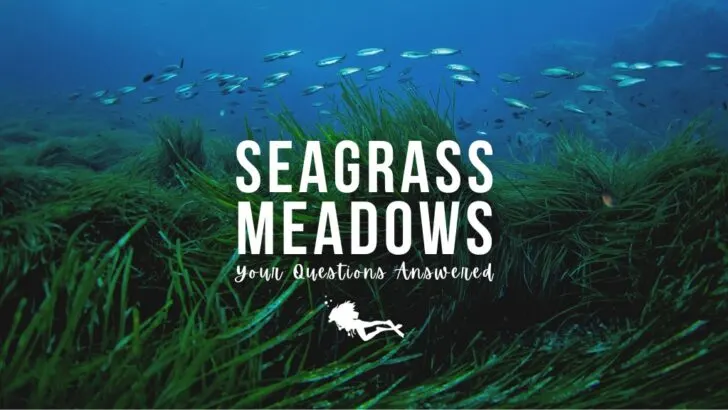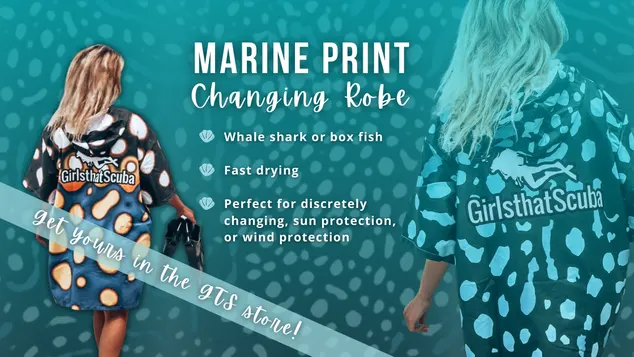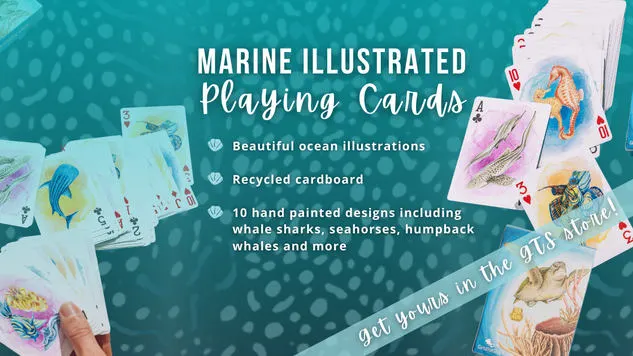Seagrass meadows have long been overlooked by scuba divers in favour of vibrant coral reefs and towering sea kelp forests. However, these luscious underwater fields are vital for the health of our oceans.
They form essential nursery grounds for small, vulnerable marine creatures, and they’re a source of food for some species too. What’s more, seagrass meadows absorb a huge amount of carbon. This means they’re crucial when it comes to combating climate change. Seagrass meadows also help to protect coastal habitats and infrastructure.
Here, we’ll take a closer look at just how special seagrass meadows are, the challenges they’re facing, and where you can find them.
What are seagrass meadows?
Let’s start with the basics. Seagrass is, as you might have guessed from the name, a grass-like plant that grows underwater. Like their land-based counterparts, seagrass have stems, leaves, and roots.
The leaves typically form long, thin, green extensions. When seagrass clusters together in large numbers, they become what is known as a seagrass meadow. These clusters can grow to impressive sizes – in fact, some are so large they can be seen from space via satellite imagery.
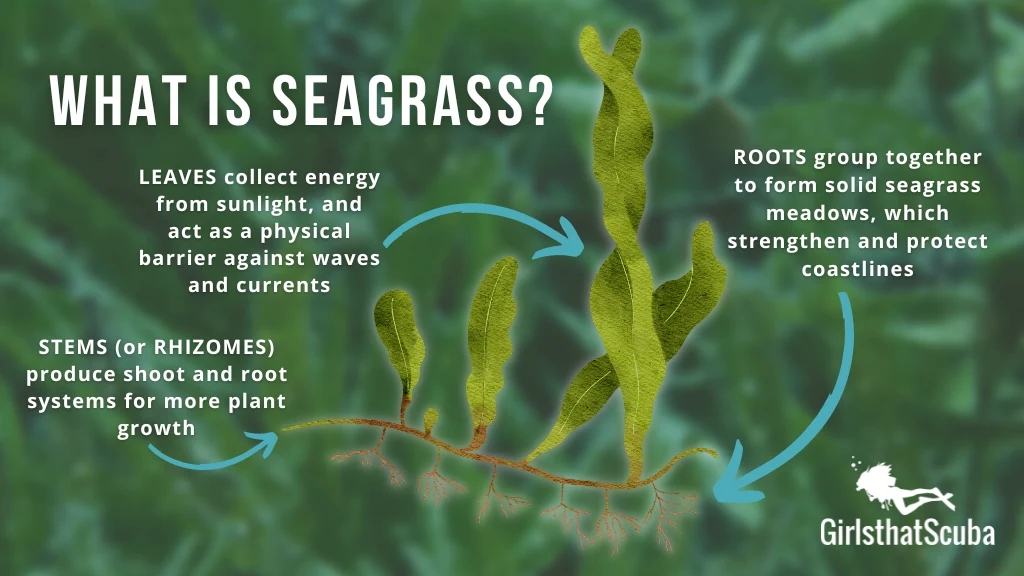
Because seagrass likes to grow on soft surfaces, the roots and other parts of the lower plant easily become entwined. It’s this connectivity that holds many soft surfaces, like sand, steady – even in the face of strong currents and powerful waves.
Seagrass also produces seeds, and it’s the only marine plant known to produce flowers.
How many species of seagrass are there?
The exact number of seagrass species out there is up for debate, with estimates ranging anywhere from 50 to 72. More species are likely to be found in the future.
However, seagrasses are typically classified into four families. These are known as Cymodoceaceae, Hydrocharitaceae, Posidoniaceae, and Zosteraceae (and sometimes a fifth, Ruppiaceae).
The different species vary a lot when it comes to leaf size, growth rates, and even reproduction. But, if you take some snaps of your sightings, there are some handy online tools you can use to identify what you’ve seen. This guide to identifying tropical indo-pacific seagrasses is a great example!
What animals eat seagrass?
Like the grass you find on land, seagrass forms a staple part of the diet of many marine creatures. Unsurprisingly, manatees, known as the ‘cows of the sea’, are particularly partial to seagrass leaves. Green turtles and even seabirds are also known to eat seagrass.
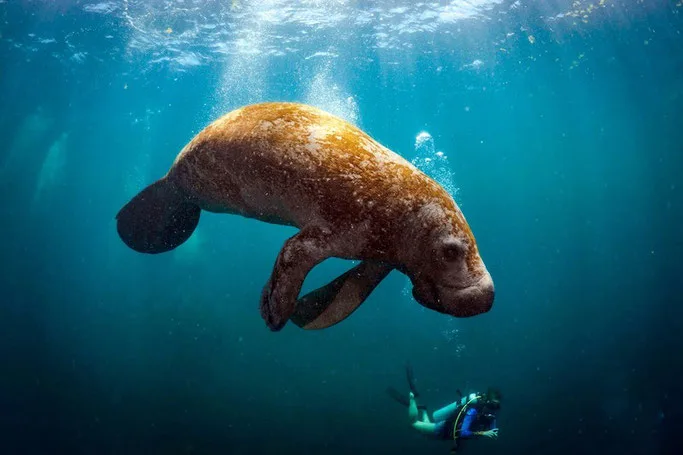
Herbivorous fish, such as parrotfish and mullets, are often referred to as grazers. They’re keen to get in on the seagrass action too! And crustaceans, like crabs and lobsters, will sometimes go for seagrass if there’s nothing better around.
It doesn’t stop there, though. Seagrasses provide a platform for the growth of algae, bacteria and other life forms, which are gobbled up by even more creatures.
Plus, unrooted seagrass that finds itself in deep waters will often be snaffled up by sea urchins. It may also decompose and be consumed by worms and other filter feeders.
Where are seagrass meadows found?
Keen to get a glimpse of these incredible ecosystems? You’ll be pleased to know that seagrass is found in the waters of approximately 150 countries. It’s also found on every continent except Antarctica.
Seagrass meadows thrive in shallow waters because they depend on the light of the sun for growth (via a process called photosynthesis). Although they’re most often found in salty waters, they grow in brackish (slightly salty) waters too – like estuaries and some lagoons.
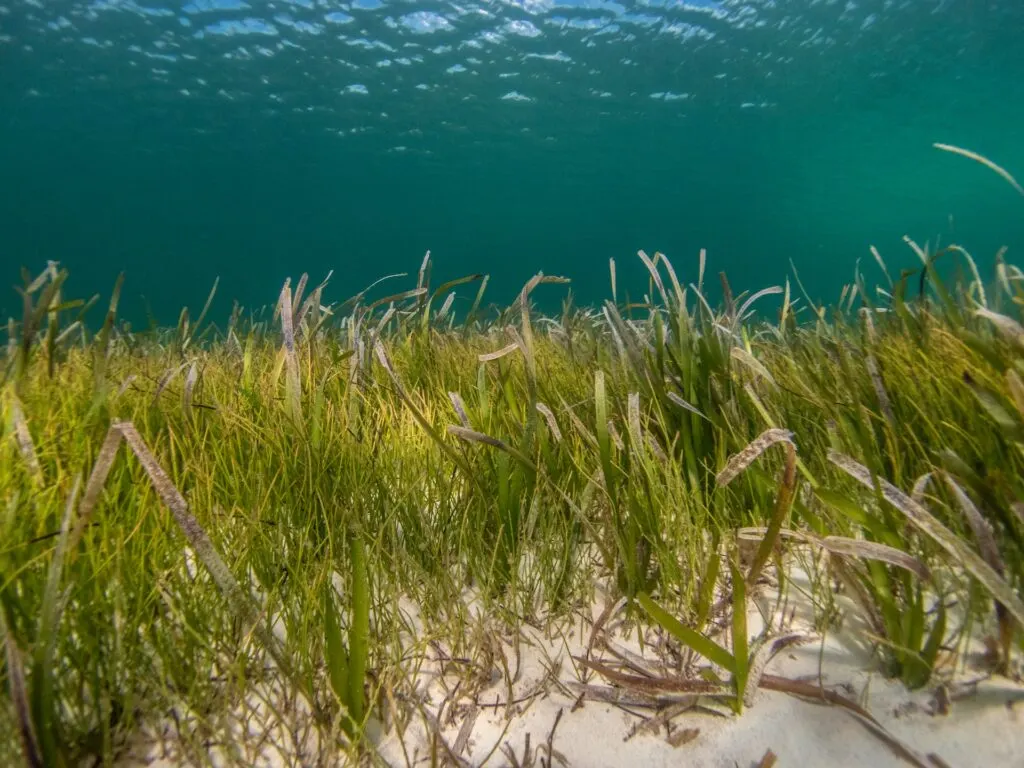
Seagrass grows predominantly in the tropics, and Australia is perhaps the most famous spot in the world for seagrass. This is thanks to its gigantic 180-square-kilometre-wide Posidonia australis meadow. Astoundingly, this expansive meadow comes from one enormous plant, making it the largest clone on earth.
The site of the meadow is called Shark Bay, and it’s home to a thriving dugong population as well as several other endangered mammal species. Unsurprisingly, this astonishing area has been designated as a UNESCO World Heritage Site.
If you’d like to see the sights for yourself, Shark Bay Dive offers a range of dive and snorkel packages for mixed abilities.
Why are seagrass meadows important?
Now we know what seagrass is and where you can find it – but why is seagrass important? Here are just a few reasons why seagrass meadows are crucial not just for the ocean, but for the entire planet.
Coastal Protection
The upper parts of seagrass (leaves and flowers) act as physical barriers from waves and currents. Most seagrass is found in shallow coastal waters and grows on soft surfaces, such as sand.
This means that the lower part of the plant (the roots and rhizomes) can dig their way into the surface. This keeps seagrass stable and traps moving particles at the same time. By holding particles in place, seagrass meadows help to keep our coastlines intact, protecting natural habitats as well as coastal buildings.
Carbon Storage
Most of us know how great tropical rainforests are for the environment – but did you know that seagrass can capture carbon a whopping 35 times faster than rainforests?
Just like plants on earth, seagrass removes carbon dioxide from the environment and breaks it down into nutrients and other molecules using the power of the sun.
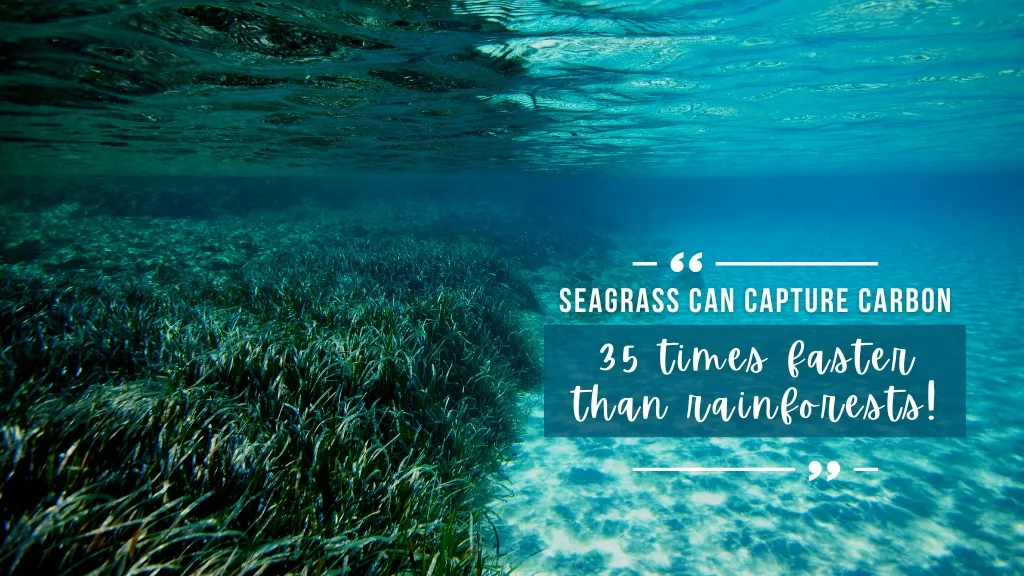
What’s more, the complex structure of seagrass means that it can bury carbon-containing molecules, like algae and dead animals, beneath the seabed. The lack of oxygen surrounding these materials means that they decompose and release carbon extremely slowly. In fact, it’s thought that seagrass can store carbon for millennia!
Biodiversity
As well as providing food for a range of marine creatures, seagrass meadows are a crucial habitat for a range of young (AKA juvenile) species. Often termed ‘nursery grounds’, seagrass meadows protect juveniles from predators. This enables their populations to thrive.
Food Security
This one is pretty self-explanatory. More fish means more food, especially in coastal areas that have depended on the ocean for food for centuries.
Are seagrass meadows under threat?
Sadly, despite their importance, seagrass meadows are declining rapidly across the world. It’s been reported that we’ve lost around 30% of global seagrass meadows already. There are estimates that 65% of seagrass networks may be degraded.
Some countries have suffered particularly heavy losses. Up to 90% of seagrass meadows in the UK are thought to have been eradicated.
But why? A small amount of damage is caused by natural processes, such as diseases and storms. Yet humans are mainly to blame for the rapid decline in seagrass meadows.
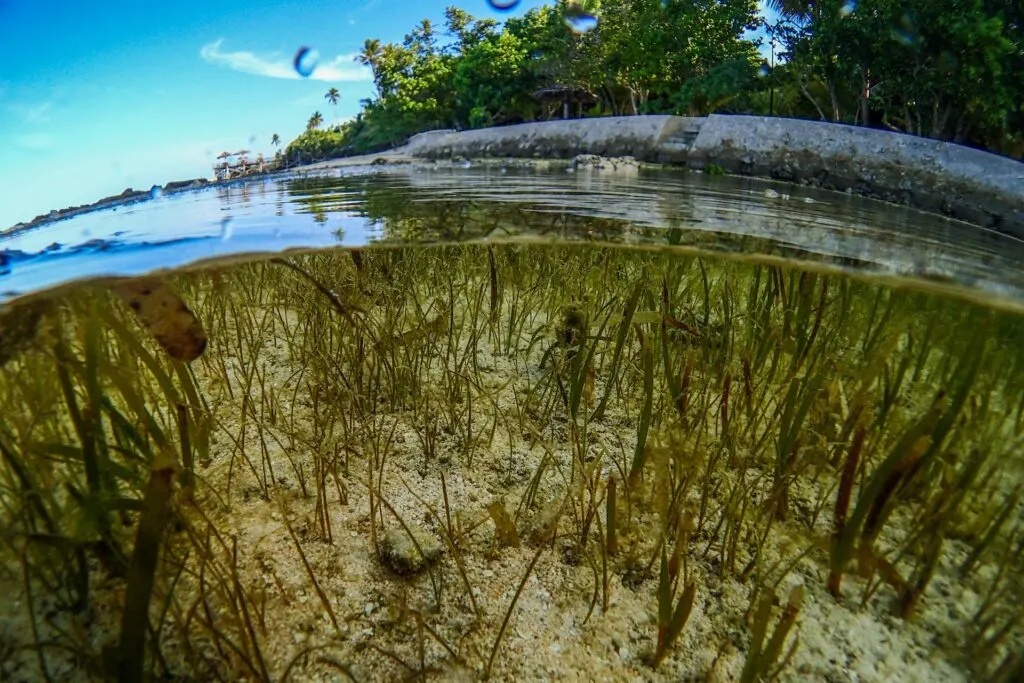
Coastal developments, dredging and reduced water quality are key causes of seagrass decline. Other factors include destructive fishing and boating practices, as well as the introduction of invasive species.
Climate change also poses many challenges for seagrass. Rising sea levels may leave many meadows out of reach of sunlight, while increased temperatures can cause physiological stress.
How can we protect seagrass?
Fortunately, all is not lost when it comes to seagrass meadows. As awareness of these incredible ecosystems continues to grow, a range of conservation initiatives are sprouting up all over the world.
As well as protecting existing seagrass meadows, many projects are exploring actively restoring seagrass beds by planting more. Most are in their early days, and there are lots of things to consider, including the best depths for planting.
However, results from a large-scale, long-term restoration project (The Seagrass Restoration Project) are positive so far.
If you want to do your bit to protect seagrass meadows, then why not see if there’s a project near you in need of volunteers?
Alternatively, cutting down on your fuel consumption, saying no to single-use plastics, staying in eco-conscious coastal resorts, and being a responsible boater are all ways you can help to protect the ocean, and seagrass, during day-to-day life.

About the Author
Rose has spent the last few years living in Europe, the Seychelles and Kenya, working as a dive instructor, writer and conservationist. She’s back in the UK at the moment and is slowly acclimatising to cooler waters!

